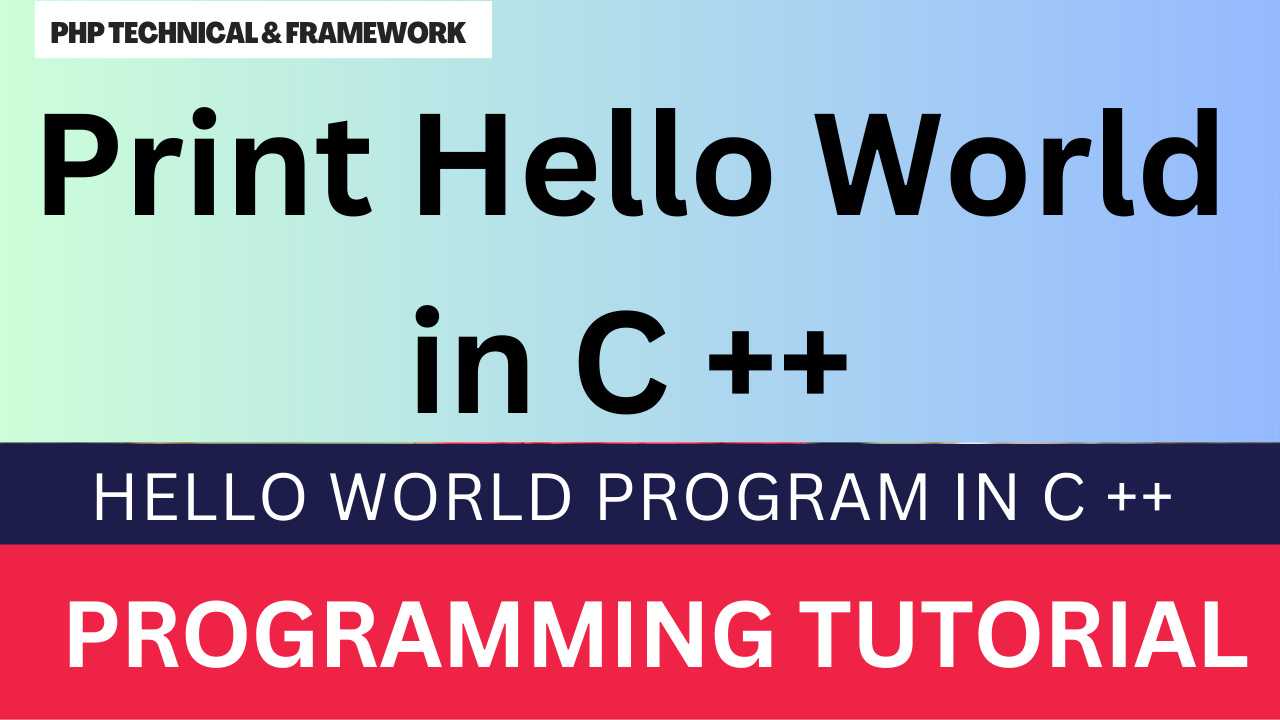Print Hello World in C ++
“Hello, world!” is the quintessential first program that is introduced to novice programmers in any programming language, and C++ is no exception. C++ is a powerful and popular object-oriented programming language that is widely used for developing software applications. In this article, we will explore how to write a simple “Hello, world!” program in C++, and some of the concepts that are involved.
Getting started with C++:
To write a C++ program, you need to have a compiler installed on your computer. A compiler is a program that translates the source code that you write into machine code that the computer can execute. There are many C++ compilers available, both commercial and free, for different operating systems. Some popular C++ compilers include Microsoft Visual C++, GNU Compiler Collection (GCC), and Clang.
Once you have a compiler installed, you can start writing your first C++ program.
The “Hello, world!” program:
The “Hello, world!” program is a simple program that prints the string “Hello, world!” to the console or terminal. Here is the code for the program:
#include <iostream> int main() { std::cout << "Hello, world!\n"; return 0; }
Let’s break down the program line by line.
#include <iostream>
This line includes the iostream header file, which contains the input and output stream classes that are used to read and write data from the console or terminal.
int main()
This line defines the main function of the program. The main function is the entry point of the program, and is executed first when the program is run.
{
This line starts the body of the main function.
std::cout << "Hello, world!\n";
This line uses the cout object, which is an instance of the ostream class, to write the string “Hello, world!” to the console or terminal. The << operator is used to insert data into the output stream.
return 0;
This line returns the value 0 to the operating system, indicating that the program has completed successfully.
}
This line ends the body of the main function.
Compiling and running the program:
To compile the “Hello, world!” program, you need to save the code in a file with a .cpp extension, such as helloworld.cpp. You can then use the compiler to compile the program into an executable file.
If you are using the GCC compiler on Linux or macOS, you can compile the program using the following command in the terminal:
g++ helloworld.cpp -o helloworld
This command tells the compiler to compile the helloworld.cpp file into an executable file called helloworld.
If you are using the Microsoft Visual C++ compiler on Windows, you can use the Visual Studio IDE to create a new C++ project, add the helloworld.cpp file to the project, and then build the project to create an executable file.
Once you have compiled the program, you can run it from the terminal or command prompt using the following command:
./helloworld
This command tells the operating system to execute the helloworld executable file.
Conclusion:
In this article, we have learned how to write a simple “Hello, world!” program in C++, and how to compile and run the program using a C++ compiler. While the “Hello, world!” program may seem trivial, it is an important starting point for learning how to write more complex C++ programs. By understanding the basic syntax and concepts involved in writing a C++ program, you can start exploring more advanced topics such as object-oriented programming, data structures, and algorithms. Happy coding!
